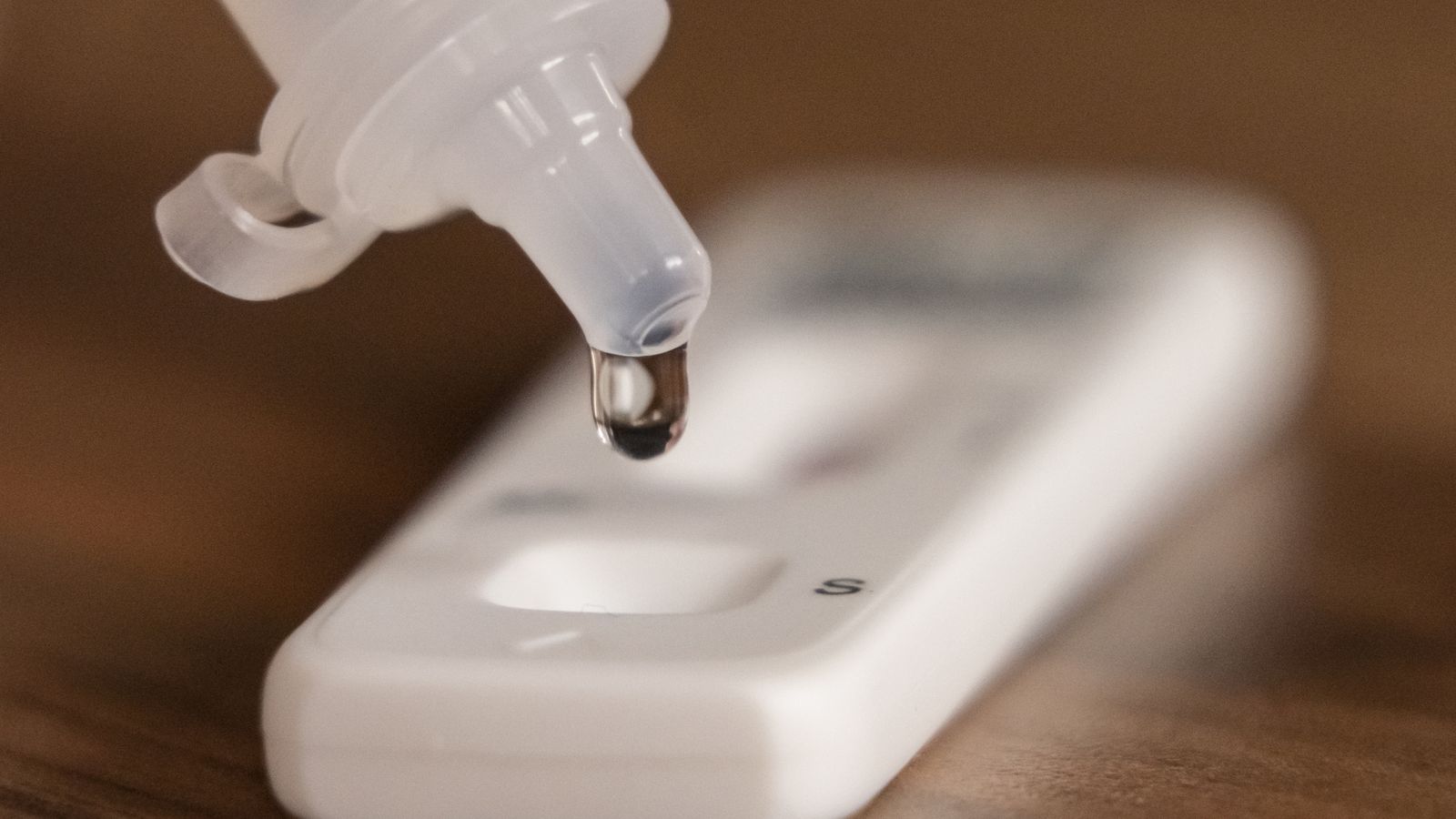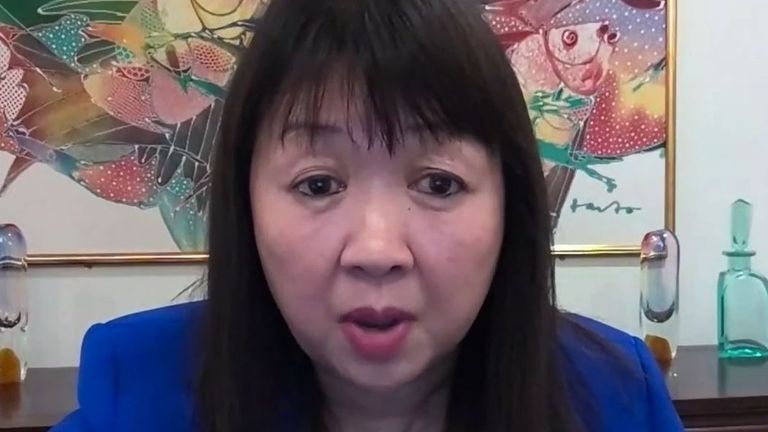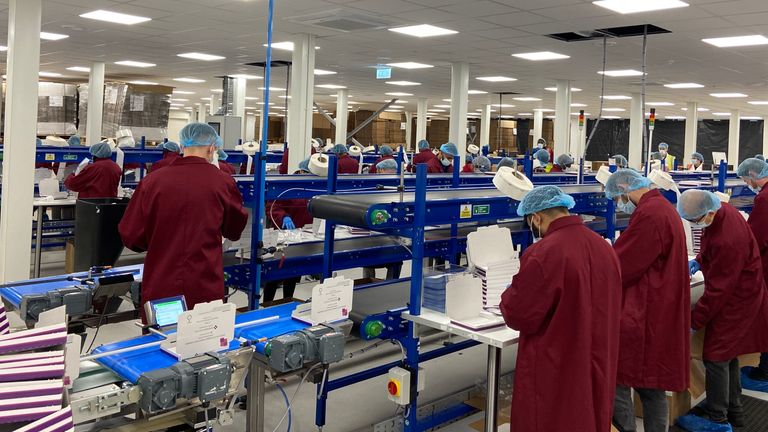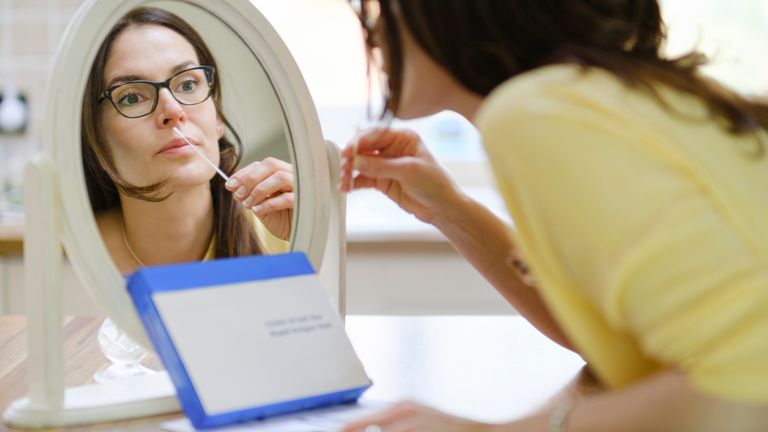The isolation period in England for those who test positive for COVID will be reduced from seven days to five, the health secretary has announced.
Revealing the move in a Commons statement, Sajid Javid said data from the UK Health Security Agency shows that “around two-thirds of positive cases are no longer infectious by the end of day five” and “we want to use the testing capacity that we’ve built up to help these people leave isolation safely”.
Live COVID updates as Van-Tam explains why he stepped down
The change will come into effect on Monday.
Individuals will be able to leave their isolation five full days after experiencing symptoms or receiving a positive test result, whichever is first, provided they have negative COVID-19 tests on days five and six.
“These two tests are critical to these balanced and proportionate plans, and I’d urge everyone to take advantage of the capacity we have built up in tests, so we can restore the freedoms to this country while we’re keeping everyone safe,” Mr Javid said.
Labour’s shadow health secretary Wes Streeting welcomed the announcement, but called for testing to be “sorted out”.
“Before Christmas he told us there was no issue with supply – but over Christmas, NHS staff and other key workers were unable to access tests because the government hadn’t noticed that the deliveries had shut up shop for Christmas,” he said.
At the moment, individuals who test positive are able to end their isolation period after seven days if they receive a negative lateral flow test on days six and seven – with the tests taken 24 hours apart.
This change was introduced just before Christmas, but there have been calls for the government to reduce the isolation period again due to continuing pressure on the NHS and workplaces caused by the high numbers of people isolating.
But worries have been expressed about the potential for such a move to drive an increase in infections.
Matthew Taylor, chief executive of the NHS Confederation, said: “This is a pragmatic move which leaders will welcome if it can mean more health and care workers who are well enough can return to the frontline, providing it does not significantly add to the risk of the virus spreading.”
What will be the impact of reducing the isolation period to five days?
New research by the UKHSA shows that only 1 in 20 cases are still infectious with two negative lateral flow tests by day seven, which was nearly the same as the 5% of cases released after 10 days with no testing.
However, their modelled scenario showed that more than 30% of cases were still infectious on the fifth day.
Although the study did not include cases with Omicron, separate evaluation by NHS Test and Trace has shown a comparable result for the new variant.
‘Difficult weeks ahead’
Updating MPs on the situation with COVID more generally, the health secretary said the virus “is still with us” and there are “still likely to be difficult weeks ahead”.
But Mr Javid said data from the Office for National Statistics shows “encouraging signs that infections are falling in London and the east of England” and that there are “already early signs that the rate of hospitalisation is starting to slow”.
He added that infections are rising in other parts of the country and the data has yet to reflect the impact of people going back to work and school after Christmas.
On hospitalisations, Mr Javid said Omicron “still has the potential to lead to significant numbers of people in hospital”, with almost 17,000 patients currently in hospital in England.
“Due to the lag between infections and hospitalisations, the NHS will remain under significant pressure over the next few weeks,” he continued.
Read more from Sky News:
How many COVID patients does your local hospital have?
France eases COVID travel restrictions for people arriving from UK
The health secretary restated the government’s commitment to mandatory COVID jabs for health care workers, a policy that is set to come into force in April.
Mr Javid told MPs that since a government consultation on the plan in September, the proportion of NHS trust health care workers who have had at least one vaccine dose has gone up from 92% to 94%.



